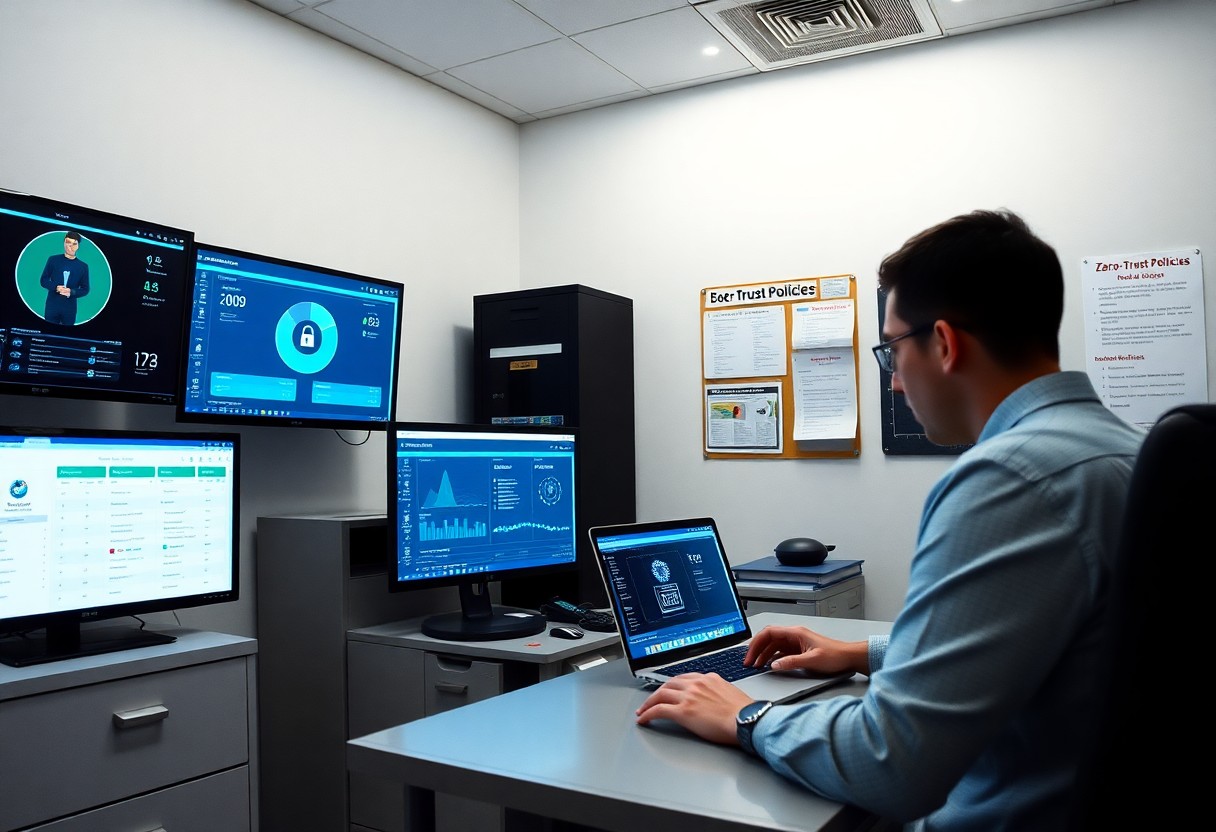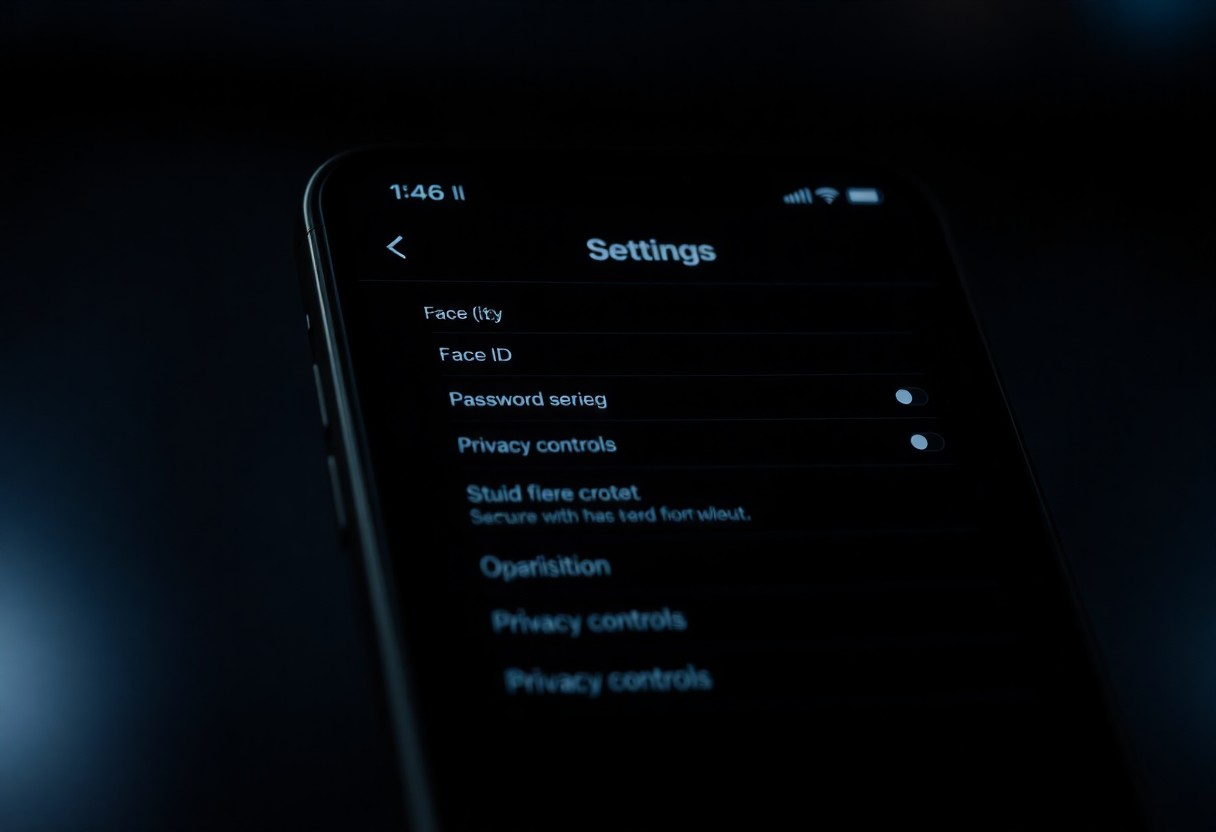Many small offices underestimate cyber threats, leaving them vulnerable to attacks that can disrupt operations and compromise sensitive data. To safeguard your business, adopting a zero-trust security model is necessary. This month, you can implement eight strategic moves that will enhance your security posture, ensuring that every access request is verified before granting permissions. By embracing these proactive measures, you protect your valuable assets and foster a safer working environment.
Key Takeaways:
- Implement multi-factor authentication to enhance security and reduce unauthorized access.
- Regularly update and patch all software to protect against vulnerabilities.
- Conduct user training on security best practices to strengthen the overall security posture of the office.
The Zero-Trust Paradigm: Redefining Security Norms
The zero-trust paradigm shifts the focus from a traditional status quo of perimeter-based security to a model that scrutinizes every access request. In this framework, you no longer trust any user or device by default, even if they are inside your network. Emphasizing verification, zero-trust requires continuous validation of identity, device health, and access rights, which reinforces a much higher level of organizational security.
Shifting from Perimeter to Identity
The transition from perimeter-based to identity-centric security marks a significant evolution in how you protect your data. Instead of relying solely on firewalls and edge security, you must prioritize verifying user identities and their access privileges. This approach demands that you implement solutions such as identity and access management (IAM) systems, which allow you to ensure that only the right people have the right access to the right resources.
The Role of Continuous Authentication
Continuous authentication is a key element in enhancing your security posture. By continuously verifying user identity throughout a session, you can detect anomalies and suspicious behavior in real time. This reduces the window of opportunity for attackers, making it harder for unauthorized individuals to gain access to sensitive information.
With continuous authentication, your system can utilize multiple factors, such as behavioral biometrics, location data, and device information, to actively monitor user activity. For example, if an employee typically logs in from a specific device and location, any deviation from this pattern could trigger additional verification steps. Such proactive measures not only safeguard sensitive data but also empower your security teams to respond swiftly to potential threats, minimizing risks to your organization.
Practical Steps: Implementing Zero-Trust in Your Office
Implementing a Zero-Trust framework in your office involves precise strategies that minimize risk while enhancing security. Begin by assessing your existing infrastructure and pinpointing potential vulnerabilities. Adopt a methodical approach, breaking down the process into manageable tasks. Each step not only strengthens your defenses but also fosters a culture of cybersecurity awareness among your staff, ensuring they are active participants in your security strategy.
Segmenting Your Network to Limit Access
Network segmentation divides your network into smaller, manageable sections, effectively controlling access rights. This approach limits the spread of threats, ensuring that breaches in one area do not compromise the entire network. By segmenting your network based on user roles and function, you can allocate access only to imperative resources, significantly reducing the attack surface available to cybercriminals.
Enforcing Least Privilege Access Control
Implementing least privilege access control means granting users the minimum level of access necessary to perform their tasks. This principle not only reduces the risk of insider threats but also confines the potential damage from external breaches. Carefully review user permissions and regularly update access rights as roles evolve within your business, ensuring that data remains protected.
Enforcing least privilege access control requires continuous monitoring and adjustment. Begin by auditing current user access, identifying any over-permissions or outdated access rights. Tools like access management software can automate the enforcement of these controls by integrating with your systems, ensuring that users only maintain permissions that align with their specific job functions. Additionally, requiring multi-factor authentication (MFA) adds another layer of security, making it more difficult for unauthorized users to gain access, even if login credentials are compromised.
Visibility and Monitoring: Keeping an Eye on User Behavior
Establishing visibility and monitoring capabilities is crucial to effectively implementing a Zero-Trust model. You need continuous oversight of user activities and access patterns to detect anomalies and prevent potential breaches. Tracking who accesses what data and when can help identify any suspicious behavior before it escalates into a significant threat. Leveraging advanced tools enables you to maintain a comprehensive view and respond proactively to emerging risks.
Utilizing User and Entity Behavior Analytics (UEBA)
Integrating User and Entity Behavior Analytics (UEBA) into your security framework empowers you to detect abnormal behavior by analyzing patterns unique to each user. By establishing baselines of typical actions, you can swiftly identify deviations that may signal security incidents. For instance, if an employee suddenly accesses sensitive information outside of their usual scope or at irregular hours, the system alerts you, allowing you to take immediate action.
Centralizing Logging for Threat Detection
Centralizing your logs is vital for effective threat detection. By channeling data from various sources into a single repository, you enhance visibility into multiple activities across your network. This consolidated view enables faster, more accurate analysis when investigating potential security incidents. Implementing tools like SIEM (Security Information and Event Management) solutions can automate the collection and analysis of log data, significantly speeding up the detection process.
Centrally logging data from endpoints, cloud services, and network devices aids in establishing a comprehensive security posture. With centralized logging, you can correlate events across different systems to pinpoint the origin of anomalies and streamline your incident response. For example, if multiple users experience unauthorized access to files, analyzing centralized logs can reveal patterns, such as common IP addresses or login times, guiding you to construct a clearer picture of the threat landscape. This proactive approach not only enhances incident detection but also aids in forensic investigations post-breach, bolstering your overall security initiatives.
Device Security: Safeguarding the Diverse Office Environment
Securing a range of devices in a small office setting is imperative to maintain a robust defense against potential threats. With employees utilizing various personal and corporate devices, implementing strict policies and controls ensures that all endpoints are equipped to mitigate risks. Regular assessments of device security posture and enforcing compliance with established protocols help create a unified defense strategy that protects sensitive data regardless of device origin.
Mandating Endpoint Security Measures
To protect your network, establish strict endpoint security measures that include antivirus software, firewall protections, and regular security audits. By requiring all devices—whether personal smartphones or work laptops—to comply with these standards, you significantly reduce vulnerabilities. Actively managing software updates and pushing necessary patches ensures your defenses stay one step ahead of evolving threats.
Incorporating Secure Access Service Edge (SASE)
Integrating a Secure Access Service Edge (SASE) framework enhances your device security by combining networking and security into a unified cloud service. This allows you to enforce policies that govern access based on user identity and device trust, regardless of location. Implementing SASE enables secure, efficient connections while minimizing the risk of data breaches in your diverse office environment.
Utilizing SASE transforms your approach to secure access by merging wide-area networking and network security services into a single cloud-native architecture. With SASE, you benefit from real-time threat intelligence and adaptable policies that respond to user behaviors and device health, significantly improving your office’s security posture. Both remote and on-site users gain secure access to applications without compromising performance, while network segmentation ensures sensitive data remains protected from unauthorized access. This modern framework optimizes cybersecurity strategies, especially in environments with flexible work arrangements.
Training and Awareness: Empowering Employees Against Threats
Your employees are the frontline in defending against cyber threats. Strengthening their awareness and skills through comprehensive training programs will make them more resilient against attacks. By fostering a proactive mindset, you enhance your organization’s security posture, reducing the chances of human error that often leads to breaches.
Regular Security Training Programs
Establishing a Culture of Vigilance
Final Words
On the whole, implementing zero-trust principles in your small office environment is not just beneficial; it’s necessary for safeguarding your business against rising cyber threats. By taking these eight actionable steps this month, you can significantly enhance your security posture and protect your valuable data. Embracing a proactive approach enables you to stay ahead of potential vulnerabilities and fosters a culture of security within your organization, ultimately ensuring the longevity and success of your operations.



